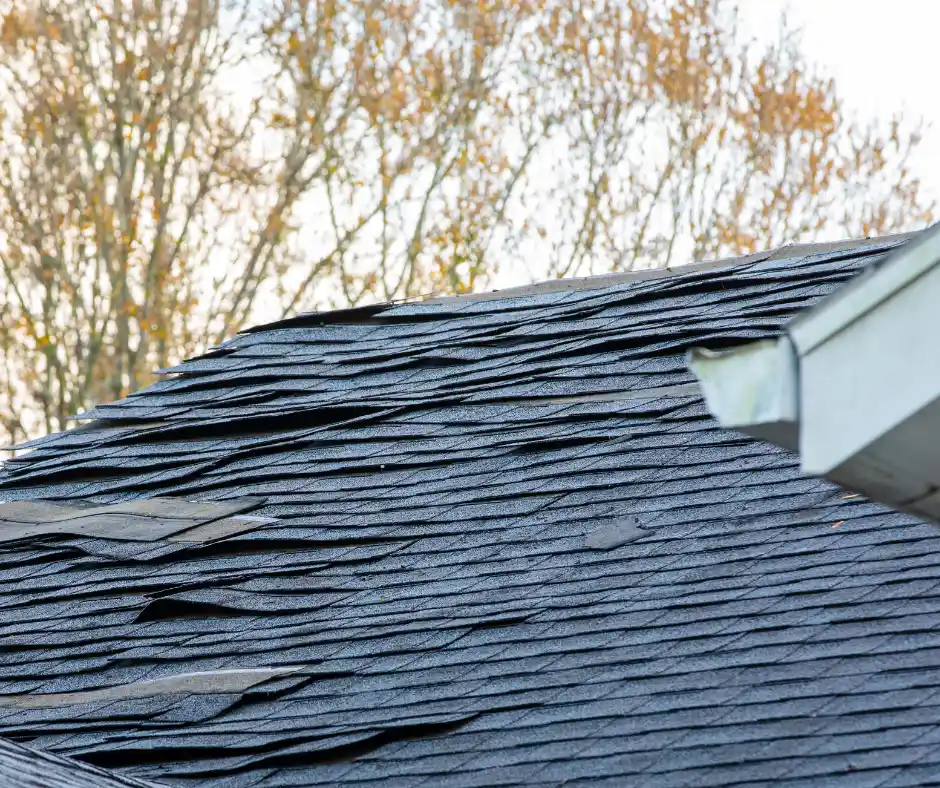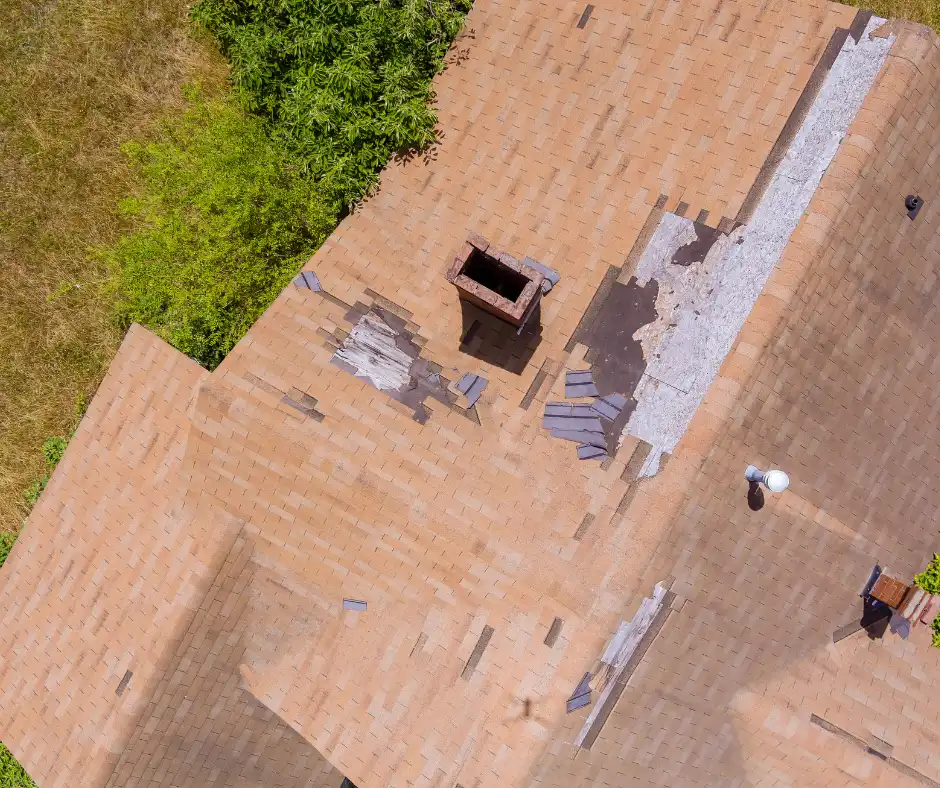Restore Or Replace The Roof: How To Know The Best For You

You’re standing in your attic, looking up at the underside of your roof. The shingles are cracked and worn, letting in spots of light. Or maybe last night’s rainstorm left a small puddle on the floor. Do you restore or replace the roof entirely?
Your roof protects your most valuable asset, so you want to make the right call. Weigh factors like roof age, climate, and budget to decide whether restoration or full replacement works best for you.
With strategic planning and proactive maintenance, your roof can shelter your home for decades to come.
Assessing Your Roof’s Condition
A comprehensive assessment of your roof’s condition is a crucial first step before embarking on any restoration or replacement project.
This evaluation, ideally conducted by a qualified roofing professional, provides invaluable insights that empower informed decision-making.
By meticulously examining the extent of wear and tear, the inspector can pinpoint areas requiring specific attention and gauge the overall integrity of the roofing system. This knowledge is paramount in determining if a restoration project, focusing on repairs and targeted improvements, can effectively extend the lifespan of your roof.
Alternatively, the assessment may reveal widespread deterioration or underlying structural issues necessitating a complete roof replacement.
Ultimately, a thorough roof condition assessment safeguards your investment by ensuring you allocate resources appropriately, whether revitalizing a salvageable roof or strategically planning for a necessary replacement.
Factors to Consider When Deciding Whether to Restore or Replace The Roof Of Your Home
Age and Condition of Your Roof
The age and current condition of your roof are two of the most important factors in determining whether to restore or replace it.
According to industry experts, the average asphalt shingle roof lasts 20-25 years, while wood shake and tile roofs last 30 to 50 years.
If your roof is approaching this age or showing signs of damage or deterioration like curling, cracking, or missing shingles, replacement is probably your best option.
According to a report by the National Association of Home Builders, roofs over 20 years old have a high chance of leaking or suffering other damage that requires full replacement rather than repair.
Restoring an older roof may seem appealing in the short term, but it likely won’t last as long as a new roof and you’ll end up paying more in the long run.
Roof Leaks or Structural Damage
If your roof has multiple leaks or areas of structural damage like dents, punctures or sagging, replacement is the smarter choice.
Look for curled, cracked, or missing shingles, which allow water to seep in and cause rot or mold. Sagging or uneven areas of the roof also indicate structural damage and the need for replacement.
Stains or water spots on interior ceilings or attic spaces are a sign that leaks have already begun and replacement should be a top priority. Not only will a new roof provide better protection for your home, but it can also increase your property value.
Patching leaks or making spot repairs to a damaged roof is a temporary solution and the problems will continue to worsen over time.

Energy Efficiency
An aging or failing roof won’t properly insulate your home, causing heating and cooling costs to rise significantly. According to the U.S. Department of Energy, an inefficient roof can increase energy usage by up to 20 percent. Replacing your roof with an ENERGY STAR® rated option can save you up to 20 percent on utilities and increase your home’s value.
A new roof installation provides the opportunity to add extra insulation and improve the energy efficiency of your home. Additional insulation, especially in the attic, can significantly reduce your heating and cooling costs. If energy efficiency is a priority, a roof replacement is the best option. A roof restoration will not provide the same energy-saving benefits.
Frequent Repairs
If you’re making frequent repairs to patch leaks, replace damaged shingles or fix other issues, it may make more financial sense to invest in a completely new roof. Ongoing repairs are time-consuming, and expensive and don’t address the underlying problems with an aging roof.
According to experts, if your roof needs major repairs more than 3 times in 2 years, replacement should be considered.
Cost Comparisons
While a roof restoration may seem more budget-friendly upfront, consider the long-term costs. A new roof typically lasts 2-3 times longer than a roof restoration, so you’ll likely end up paying more for multiple restorations over the lifetime of a single roof replacement.
Get estimates from respected and top-notch Winnipeg roofing contractors for both options so you can make an informed decision based on your needs and budget.
Safety Hazards
An old or damaged roof can become unsafe over time. Curling, buckling or missing shingles may fall off, endangering people walking below. A leaky roof can lead to mold growth, damaging the internal structure. And in severe cases, the roof may collapse under the weight of snow or rain. If there are any signs your roof is becoming hazardous, replacement should be an immediate priority to avoid injury or further damage.
Damaged or improperly installed roofs pose risks like falling debris, leaks causing slips and falls, and even complete structural failure. Don’t gamble with safety – if there are clear hazards present, roof replacement should be done immediately by an esteemed contractor like All Weather Exteriors.
In summary, if your roof is near the end of its lifespan, shows signs of damage or disrepair, causes high energy bills or frequent repairs, or poses safety hazards, it’s probably time to replace it. While restoration may seem appealing in the short term, replacement is often the most cost-effective and prudent option to protect your home and investment in the long run.
When Roof Restoration Makes Sense
According to the National Roofing Contractors Association, roof restoration can extend the life of an existing roof by up to 15 years.
If your roof is less than 10-15 years old and still in relatively good condition, roof restoration is typically more affordable than a full replacement and can buy you precious time.
Restoration is ideal if you have surface damage like minor leaks, tears, or punctures in the roof membrane, or visible signs of weathering. Patching and sealing these areas can prevent further damage and deterioration.
A 2015 study found that properly restored roofs lasted on average 12-14 years before needing replacement.
Roof coatings, in particular, provide a protective barrier against the elements while reflecting sunlight to reduce cooling costs.
However, if your roof shows signs of structural damage or is sagging in areas, restoration may only be a temporary solution. Significant dips or valleys in the roof can indicate damage to the decking or trusses below and restoration materials may not adhere properly. In these cases, full replacement is the safer option to prevent collapse or failure.
The location and climate also determine if restoration is right for you. In areas with harsh, extreme weather, roof replacement often makes more sense as restoration may not withstand intense temperature fluctuations or heavy snow loads over the long run.
Always consult a reputable contractor to evaluate your roof’s condition. They can determine if restoration will provide lasting protection or if replacement is the better investment for your home.
With regular maintenance and occasional touch-ups, a restored roof can continue shielding your home for many years. But if the restoration starts to fail or your needs change, a roof replacement may become necessary.
The key is not to wait until it’s an emergency. By planning ahead, you have time to explore the options and choose what’s right for your budget and peace of mind.

How to Choose the Right Roofing Contractor for Your Project
Choosing a roofing contractor is an important decision that can impact your home for years to come. Do your research to find a legitimate company with a proven track record of quality work. According to a recent survey, over 70% of homeowners regret not properly vetting their roofing contractor.
Check licensing and insurance. In Manitoba, roofing contractors must be provincially licensed and carry liability insurance and workers’ compensation. Ask to see the contractor’s credentials to ensure they are properly licensed and insured.
Get multiple quotes. Obtain at least three written estimates from roofing contractors in your area. Compare the scope of work, materials, timeline, and total cost. Super low prices might signal hidden problems. According to industry experts, a quality roof installation in Winnipeg averages between $6,000 to $10,000 for an average-sized home.
Read reviews from past clients. Check sites like Google Reviews and the Better Business Bureau to read reviews from the contractor’s past clients. Look for companies with mostly positive reviews mentioning quality work, fair pricing, and good communication. Beware of contractors with no online reviews or a long history of poor reviews.
Ask for references from past clients. To build trust, a trustworthy roofing contractor should readily offer references. Call a few references to ask about their experience with the contractor. Inquire about the quality of work, if the job was completed on time and within budget, and if they would recommend the contractor.
Make sure they are certified. Several roofing manufacturers offer certification programs for contractors. Choosing a contractor certified to install a particular brand of roofing materials ensures they have proper training and experience. They will also likely offer strong warranties on materials and labor.
By thoroughly vetting roofing contractors in Winnipeg, you can choose a reputable company to trust with this important investment in your home. Take the time to do it right—your new roof could last 20-30 years or more, so you’ll want a contractor that provides quality and value.
You now have the tools to make an informed decision when it comes to restoring or replacing your roof.
Carefully examine the condition, age, and material of your existing roof. Consider the costs of repair versus replacement and the long-term investment for your home or business. Consult roofing specialists to get professional assessments.
And don’t forget to factor in energy efficiency – a new roof can provide savings on utility bills for years to come. Weigh all the variables thoughtfully.
With the guidelines provided, you can determine if restoration or replacement is the best choice for your roof and budget. Your diligence will pay off with the right roof for your needs and peace of mind knowing you made a wise decision.
Confused about Roof Repair or Replacement in Winnipeg? Don’t fret!
At All Weather Exteriors, our experts provide FREE roof inspections to help you make the best decision for your home. Winnipeg’s harsh winters demand a strong roof, and we understand that. Our thorough assessment will pinpoint any issues and recommend the most cost-effective solution, be it a restorative fix or a full replacement.
Don’t wait for leaks or further damage. Call All Weather Exteriors today for your FREE roof inspection and peace of mind!
Leave a Reply
You must be logged in to post a comment.

4 Comments